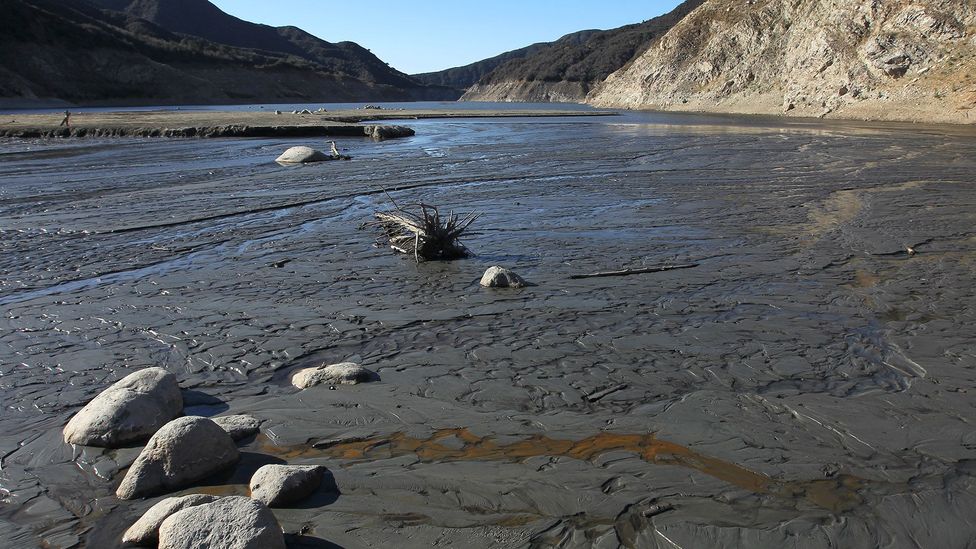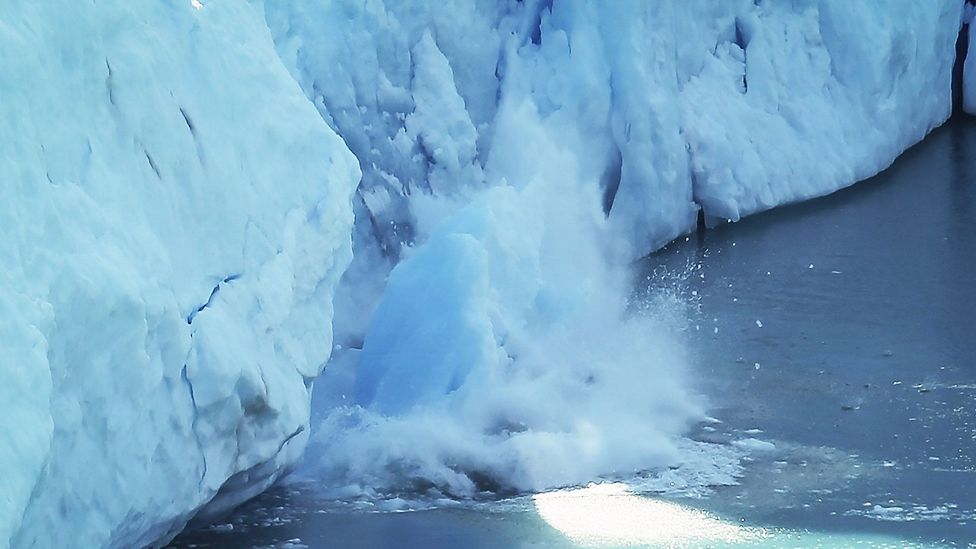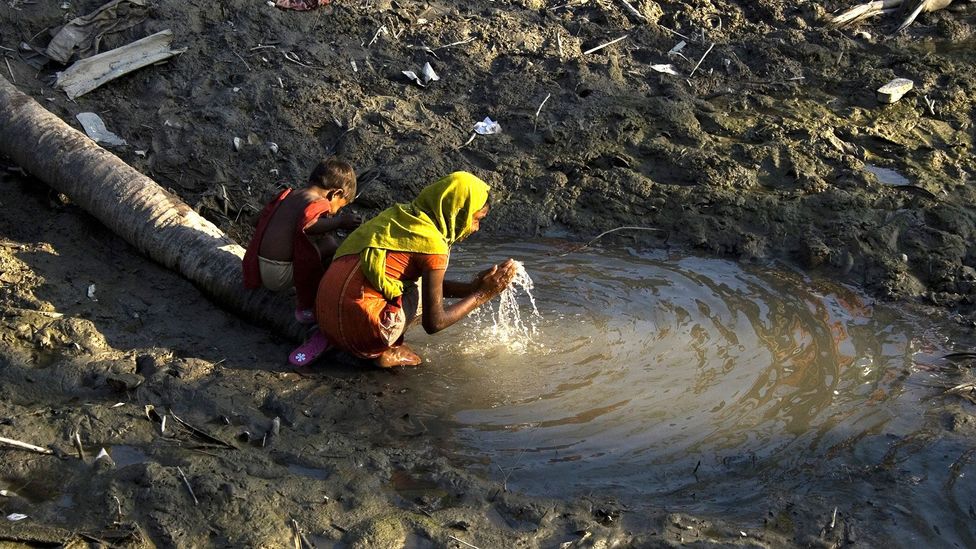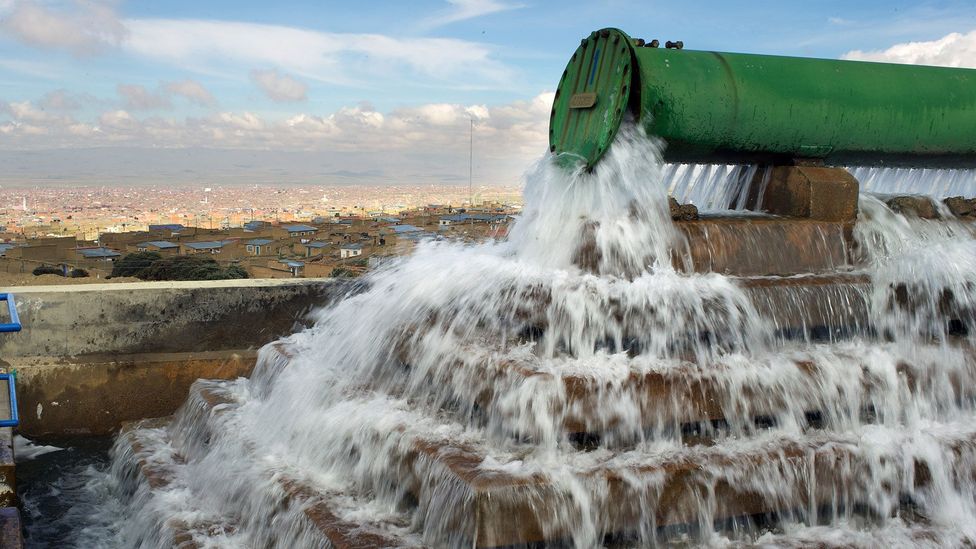Ball Rolls Off the Green Into Water Where to Drop
Is the creation run stunned of fresh water?

Increasing temperatures and populations threaten a precious constituent and puzzle a earnest problem. What can we serve about protecting our most essential resource?
T
The next sentence you open a can of soft drink, consider where the irrigate inside it came from. The H20 in an Indian can of Coca-Cola includes treated rain, piece the table of contents in the Maldive Islands may once have been seawater. The water needs to come from such different sources for a reason – it's because there is a global fresh water crisis.
Given that 70% of the Earth's skin-deep is water system, and that intensity remains constant (at 1,386,000,000 blocky kilometres), how is a water shortage even possible? Cured, 97.5% is seawater unfit for anthropomorphic consumption. And some populations and temperatures are ever-rising, meaning that the freshwater we do get is under severe pressure.
Water demand globally is projected to increase by 55% between 2000 and 2050. Very much of the demand is driven by USD, which accounts for 70% of global fresh water use, and food production wish need to grow by 69% by 2035 to feed the growing population. Water withdrawal for energy, utilized for cooling power stations, is also expected to increase by over 20%. In some other words, the near future presents one walloping fresh water drain after the next.
What's more? Right now, according to a Nasa-led study, many of the world's freshwater sources are being drained quicker than they are being replenished.

Earth's glaciers and ice caps shut up all over 68% of its freshwater supply, but scientists believe global climate change accounts for their recent, rapid melting (Credit: Getty Images)
Of the world's major aquifers (annoy and sand-full underground reservoirs), 21 out of 37 are retiring, from India and China to the United States and France. The Ganges Basin in India is depleting, due to population and irrigation demands, by an estimated 6.31 centimetres every year. Jay Famiglietti, fourth-year water man of science at Nasa, has warned that "the water system table is dropping all over the world. There's not an infinite supply of body of water."
Meanwhile, Mexico Urban center, built on ancient lake beds, is now sinking in some areas at a rate of cardinal inches a year. As the city draws on the aquifer below, the event is like drinking a milkshake through a stalk. Once horizontal streets at once smooth comparable BMX tracks. The city imports 40% of its water, and Ramón Aguirre Díaz, director of the Water System of Mexico Urban center, has blamed "heavier, much intense rains, which ungenerous more floods, simply besides more and longer droughts."
Much of the aforementioned is natural event in California. From 2011 to 2016, the state suffered its worst drouth in 1,200 days. Its major aquifers receded at a combined plac of 16 million acre-feet per year, and roughly 1,900 wells ran air-dried. Then, in the first three months of 2017, rain fell at 228% more than its normal level, thanks to climate change, scientists say. Lake Oroville in the northern part of the put forward swung from existence at 41% of capacity to 101% in just two months, causing dams to be overwhelmed and 188,000 local residents to be evacuated.
So far even when a drought ends as spectacularly as California's, the aquifers below aren't suddenly refilled. According to Nasa's Famiglietti, it would take quaternion days of above-average rain in Calif. for that to materialise. And even then, "California will still be losing water [because the] state simply does non have enough water to do every the things that it wants to do."
Just what else could all this mean, beyond the fact that our freshwater supply could soon be same strapped?
Some hypothesise that increased water shortages more or less the world will lead to wars. The current Syrian civilized warfare has been cited by many, including Dr Peter Engelke, senior Fellow at Washington-based think factory Atlantic Council, as a recent example. "Between 2007 and 2010, Syria experienced one of the worst droughts in recorded history, the effect of which was to decimate rural communities and drive hundreds of thousands off the land and into Syria's cities, where they were marginalised," He says.
Anders Berntell, executive director of 2030 Water Resources Chemical group, a multi-sector water resources body, also suggests a data link to Boko Haram and Al-Shabaab, whereby young people "realise that, American Samoa a result of the lack of natural resources, riotous land and lack of water there are no support opportunities… There is none future for them. They become easily targeted." They are more easily radicalised.
Every of which would predict a bleak emerging – but some nations have worked out solutions. And they're impressive ones that the reside of the world can learn from.

Readily in stock fresh water supplies are especially essential following innate disasters, American Samoa seen here in Bangladesh, following Cyclone Sidr in 2008 (Acknowledgment: Getty Images)
For example, Australia survived its "Millenary Drought" from 1997 to 2009 by rapidly implementing measures that halved business and act water use.
"Australia is the amber standard," says Richard Damania, global lead economist in the World Swear's Body of water Do, and at one time of the University of Adelaide. The key was putting a price on water and making it a tradable trade good.
"[Suppose] I had water, only I'm only growing wheat berry. Whereas you'Ra growing grapes or something of higher value [than wheat, but don't take over water]" He explains. "Then I can sell you that water instead of irrigating my lower value craw. This way… Australia survived the Millennium Drought extraordinarily swell."
Another 'gold standard' is Israel, which views water availability atomic number 3 a national security issue.
By recycling effluent water, including house sewage, the Shafdan Wastewater Treatment Facility about Tel Aviv supplies approximately 140,000,000 cubic metres of water per year for agricultural use, covering 50,000 acres of irrigated land. O'er 40% of Israel's cultivation water supply inevitably are now supplied by effluent weewe. The desert sludge is also dispatched to an anaerobic digestion plant, which uses the methane as a fire to produce inexhaustible energy.
"If Israel lav love," says Anders Berntell, executive director director of 2030 Water Resources Group, a multi-sector pee resources group, "a country located in a desert, it proves that with the right engineering, economic resources and political decision, you can pass happen."
Even more listen-blowing? Yisrael's water discussion systems recapture 86% of the water that goes toss off the drain – the next-best performer, Spain, recycles barely 19%.
Israel is also a global leader in desalination – turning seawater into potable drinking irrigate. Over half of Sio's drinking water directly comes from desalination.
So force out the world simply desalinise its exit of the freshwater crisis? Information technology's unlikely, says Damiane: "On average IT's about five to sevener times more expensive. The Energy footprint is huge, and you've got to do something with the salt. If you look at aerial images around the coasts of Kuwait and Dubai [areas that are highly reliant on desalination] you'll see the havoc that is caused to marine ecosystems." Given the costs, both economic and ecologic, "it is only a boutique solution in very princely places", he says.
Coca-Dope aver it uses desalination at about 30 coastal plants. Only Greg Koch, whose title at Coca-Cola is senior manager of Global Water Stewardship, explains: "We don't see for us, nor for most places in the domain, desalinisation as a solution… the capital costs are going away to be higher than a treatment embed to treat freshwater." One tactic the company uses is, where it uses desalinisation currently, dumping the brine out at offshore via "pipes that take IT out from nearshore areas".
A simpler and cheaper solution is rainwater capture. It's an old idea whose time Crataegus laevigata have come: To a lower place Istanbul, Turkey, the Basilica Cistern improved by Caesar Justinian (A.D. 527 - 565) can restrain 80,000 cubic metres of rainwater. One and a half millennia on, many cities are now emulating it.
Melbourne's largest stormwater harvest tank lavatory store four million litres of partially treated water. Authorities including Kerala, Bermuda and the US New Islands require entirely new buildings to incorporate rainwater harvesting, while Singapore meets up to 30% of its water needs through rainwater capture.
Even in Manchester, England, where it rains along average 12 days monthly, efforts are beingness successful to capture the rainwater.

Water treatment plants, like this one in Bolivia, rely on rain and freshwater from glaciers - both of which are threatened by global climate change (Credit: Getty Images)
Manchester Metropolitan University's Birley Campus, built in 2014 to house some 6,500 students and faculty, aims to be entirely water someone-sufficient through rainwater capture, waste water recycling, and a borehole into the sandstone aquifer under.
Rainwater is massed in a 20,000 litre tank below the building and is used for showering and toilet flushing. John Hindley, the university's assistant director of estates, explains: "This is about the sustainable use of resources. In October we had storms that led to a good deal of overflowing; the University was inundated in respective divers buildings. These [events] aren't just one-offs any longer, so having more sustainable systems not scarce in use, but slowing down in the mouth run-turned, capturing it, attractive pressure off the system… is becoming of increasing importance to the university and to businesses in the city." The Birley Campus water system bill is 60% lower than if using H2O from mains.
Due to price pressures, business could be an symmetric greater driver of water efficiency than governments. Anders Berntell believes that "many of the big multinational companies are way ahead of governments when it comes to understanding and acting on the challenges that we are lining." At Coca-Cola, Koch agrees there is "a vested interest. We just opened a $100m (£79m) plant in Phnom Penh in Cambodia, a $60m (£48m) plant in Bangladesh – we want those plants to comprise there for decades and answer a contiguous market, so we have to act." This has included installing the stylish drip irrigation techniques in farms that share the same aquifers atomic number 3 Coca-Cola, disregarding of whether they are direct suppliers.
"In most places around the world the [agriculture] irrigation techniques are pretty inefficient," says Engelke. "Very efficient irrigation techniques do survive. Thermal power sources [thermonuclear, ember, natural gas] ask vast amounts of water for cooling. Renewables for the just about part – star and wind – do not. It all has to do with policies to encourage, incentivise, and invest."
"If we want to become water supply-competent societies, there are ways in which we can bed," concludes Engelke. "Either through crescendo the efficiency with which every drop of water supply is exploited, or only shifting away from water-intensive uses totally."
Whichever effective model of conserving freshwater we ascend with, we need to come in with one – and sooner rather than late.
Join 800,000+ Future fans by liking us on Facebook , surgery follow us on Twitter .
If you liked this story, sign up for the weekly bbc.com features newssheet , known as "If You Only Learn 6 Things This Week". A handpicked selection of stories from BBC Future, Ground, Finish, Capital, and Locomotion, delivered to your inbox every Friday.
Ball Rolls Off the Green Into Water Where to Drop
Source: https://www.bbc.com/future/article/20170412-is-the-world-running-out-of-fresh-water
0 Response to "Ball Rolls Off the Green Into Water Where to Drop"
Post a Comment